Good Jobs, Good Business is a comprehensive toolkit for small business owners seeking to improve job quality. The toolkit includes sections on Employee Compensation, Scheduling and Paid Leave, Hiring and Professional Development, Employee Engagement, Health Benefits, Retirement and Wealth Building, Racial Equity, and Covid-19. Each section helps users develop a business case and provides guidance on implementing new policies. This resource is designed for small business owners but can also be used by partners (including lenders and workforce development organizations) to coach businesses on job quality improvements with potential business benefits.
This step-by-step guide for employers and the practitioners who work with them provides information about how to foster inclusion for refugees in the workplace to harness diverse perspectives and drive positive business outcomes. It makes the business case for hiring refugee employees and suggests six inclusion initiatives to support refugee retention.
While workers are granted basic protections against discrimination under the Civil Rights Act of 1964, these rights are not always enforced. This fact sheet provides a walkthrough of the Equal Employment Opportunity Commission (EEOC) filing process to take legal recourse against discrimination. Included are sections such as a description of your legal rights, information needed to file a charge, the investigation, the employer’s response, and mediation and settlement. This resource will be most useful for workers facing discrimination and their advocates.
This question bank includes targeted questions that workforce development professionals can ask retail business representatives to have learning focused conversations and deepen relationships. The tool includes questions to help understand a business and its workforce, employee engagement, development and advancement in a firm, and wages and scheduling practices.
To make the business case for improving retention, employers can use this simple calculator to get a ballpark estimate of hard costs of turnover. Partners can complete this exercise with businesses to show the value of their services or talent management practices that reduce turnover. Unlike many other turnover calculators, this tool includes both direct costs, such as the cost of hiring or orientation, and indirect costs, such as lower employee morale or poorer customer service.
In this paper, authors Karen L. Corman and Ryne C. Posey outline several key considerations for implementing a pay audit to assess pay disparities among current and incoming staff. Topics explored include the potential benefits and drawbacks of pay equity audits, the purpose and parameters of the audit, privilege considerations, practical guidance for conducting the audit, and post-audit considerations and remediation strategies. HR professionals and other individuals involved in conducting pay audits may find this resource useful. Additionally, those who work with employers may be interested in sharing this with their partners. You may access this downloadable document by clicking on the “PDF” symbol towards the top, right-hand side of the linked webpage.
This toolkit by the Department of Labor provides steps and resources to start and register an apprenticeship program. When delivered appropriately and connected to advancement opportunities, apprenticeships can strengthen job quality by increasing worker stability and mobility. This toolkit could be particularly useful for a business or labor organization, a workforce intermediary, a community-based organization, or an education institution developing an apprenticeship program.
This publication details seven key components of a modernized tuition assistance program, including flexibility, inclusiveness, affordability, and support. This information can be useful to employers seeking to develop or enhance a tuition assistance program and to practitioners who work with businesses to improve worker mobility.
This step-by-step guide by Upskill America, an initiative of the Economic Opportunities Program, and the Institute for Corporate Productivity details the steps to change an organization’s tuition assistance program to a tuition disbursement program, providing financial support for education up-front rather than offering reimbursement after a worker has completed a program. This simple change to the structure of a tuition assistance program has important job quality and equity implications; it can make education and upskilling accessible to workers who are eager to learn but lack access to resources to pay for school. This tool is useful for employers and all practitioners who work with them to strengthen job quality.
This racial equity tool is designed to support workforce development organizations and practitioners to advance their racial equity practice. The assessment guides workforce development organizations and practitioners to evaluate their programs, operations, and culture in order to identify areas of strength and opportunities for growth. Practitioners can use the toolkit to explore approaches that support institutional racial equity, evaluate their current efforts, and plan next steps to strengthen their practices.
